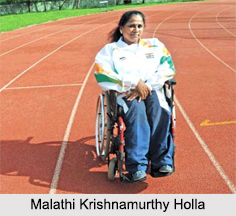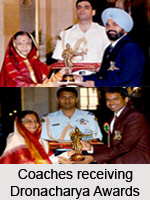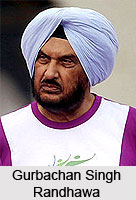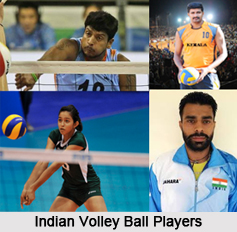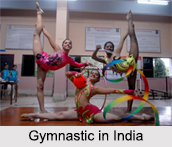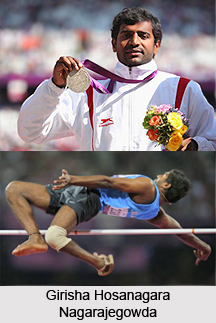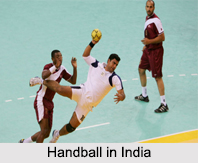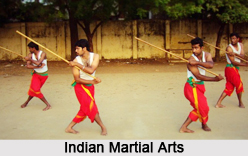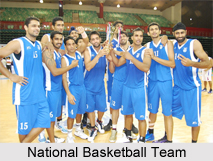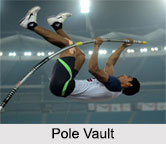Floor exercises in gymnastic consist of handsprings, cart-wheels, somersaults, back flip, back somersaults and other blended leaps, springs and balances. Women exercise with music and their movements must be synchronized with the music. There are lots of dancing movements, dancing poses, leaps and jumps the "mat" for floor exercises is 14 square metres but the working area is 12 square metres. The mat is made of four layers. The uppermost layer is of carpet cover, under this is the cushion layer and under that floor plate and elastic supports. The total height of the floor mat is 120 mm. Men perform for 70 seconds and women with musical accompaniment from 70 to 90 seconds
Vaulting Horse
The vaulting horse is also shared by both men and women:
(a) Construction: Leather-covered body similar to a pommel horse but without the pommels.
(b) Height: For men 1.35 m above the floor and placed length-wise. For women 1.20 m above the floor and placed breadth-wise.
(c) Run-up: 25 metres. The vault execution differs from person to person but marks are awarded for the degree of difficulty, smoothness and good position making. Vaults are categorised into four categories: A, B, C and D. The D is the most difficult.
Pommel Horse
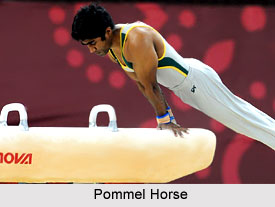 The pommel horse is an almost trapezoidal, leather-covered body on which only men compete, since it requires great strength. Its upper surface is 1.10 m above the floor. The pommels are 0.12 m high and 0.28 m wide, and 0.40 to 0.45 m apart.
The pommel horse is an almost trapezoidal, leather-covered body on which only men compete, since it requires great strength. Its upper surface is 1.10 m above the floor. The pommels are 0.12 m high and 0.28 m wide, and 0.40 to 0.45 m apart.
Ring
The ring, like the pommel horse, is practised only by men. The two rings are 0.50 m apart and suspended by two thin but strong cables. They are hung 2.75 m above the floor level
The competitor has to show at least two handstands-one, using his momentum and the other using his strength. The gymnast starts with a leap upward to grasp the rings, one in each hand, and then on conclusion of his exercise must land on both his feet together.
Parallel Bars
The parallel bars, in their original form, are used only by men.
Asymmetric Bars
The women use the asymmetric bars which are also known as "uneven bars". Length 240 cm! The upper bar in this case is 2.35 m high and the lower one is 1.55 m high.
Horizontal Bar
The horizontal or high bar probably produces the most exciting moments in gymnastics. Only men compete on it and this exercise is one which does not allow use of strength, because it hinders the smooth flow otherwise. The high bar is 2.75 m high from ground level.
Balance Beam
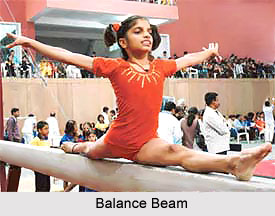 The balance beam is used only by women in competitions. The beam is 5 m long, 0.10m wide and 0.16m thick. It is at a height of 1.20 m above the ground.
The balance beam is used only by women in competitions. The beam is 5 m long, 0.10m wide and 0.16m thick. It is at a height of 1.20 m above the ground.
Modem Rhythmic Gymnastics
This form of gymnastics is performed by women who incorporate exercises with different hand-held apparatus such as ribbons, balls, ropes, hoops and clubs. This was included for the first time in the 1984 Olympic Games





